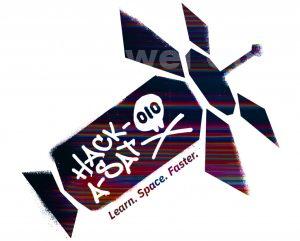
The annual event, which is run by the U.S. Air Force Research Laboratory (AFRL), is offering the winner a cash prize of $50,000.
Hack-A-Sat, now in its fourth iteration, is described as an opportunity for hackers, researchers and space enthusiasts to focus their thinking on solving space systems cyber security challenges.
“What we are trying to do is build trust, and doing it in a way that is cool and attracts the best talent to work on real-world cyber security issues for space security,” said Steve Colenzo, a computer scientist at the AFRL Information Directorate.
“This type of competitive environment brings together the hacker and research communities to take on challenges we are facing with future capabilities in space and provide critical data and information for building out more resilient capabilities for our warfighters.”
Format
Specifically, registration was opened for the virtual qualification round of the competition, running over the weekend. The teams will have competed in a jeopardy-style format, earning points based on speed and accuracy
The top five teams from the qualification event will advance to the Hack-A-Sat 4 finals in the Aerospace Village at DEF CON 31, an annual hacker’s convention in Las Vegas, running 11-13 August 2023.
Teams will then compete in an attack/defend style capture-the-flag competition that incorporates communication with an actual in-orbit satellite named Moonlighter.
The top three ranked teams at the final event will receive $50,000 for first place, $30,000 for second place and $20,000 for third place.
Moonlighter
“Moonlighter is an excellent example of industry-government collaboration and a major step forward in our quest to advance space cybersecurity,” said Col. Kenny Decker, division chief, Integration and Futures Directorate at the U.S. Space Force. “It is purpose-built to provide security researchers access and opportunities like Hack-A-Sat to gain experience with on-orbit space systems. With the launch of Moonlighter, we’ve entered a new era of space cybersecurity.”
Technically speaking, it is a 3U CubeSat with stowed outer dimensions of 34 cm x 11 cm x 11cm and flight configuration outer dimensions of 50 cm x 34 cm x 11 cm. Deployable solar panels extend off the long axis of the spacecraft and each deployed array has dimensions 34 cm x 20 cm.
Its mission orbit will be circular between 465km and 500 km altitude and it will be inclined 51.6°.
The organisers write:
“This year’s on-orbit environment presents a major change as previous Hack-A-Sat competitions took place on physical lab hardware called a flat-sat or in a virtual environment using digital twin software. The on-orbit and digital twin combination make this year’s Hack-A-Sat a more realistic space environment for the competition.”
To learn more or to sign up for contest updates, visit the hackasat.com website. You can also follow Hack-A-Sat at @hack_a_sat or at @USSF_SSC on Twitter.
The Air Force Research Laboratory (AFRL) describes itself as the primary scientific research and development center for the Department of the Air Force, leading the discovery and development of warfighting technologies for U.S. air, space, and cyberspace forces.
See also: General Atomics to build AFRL satellite for tracking cislunar space